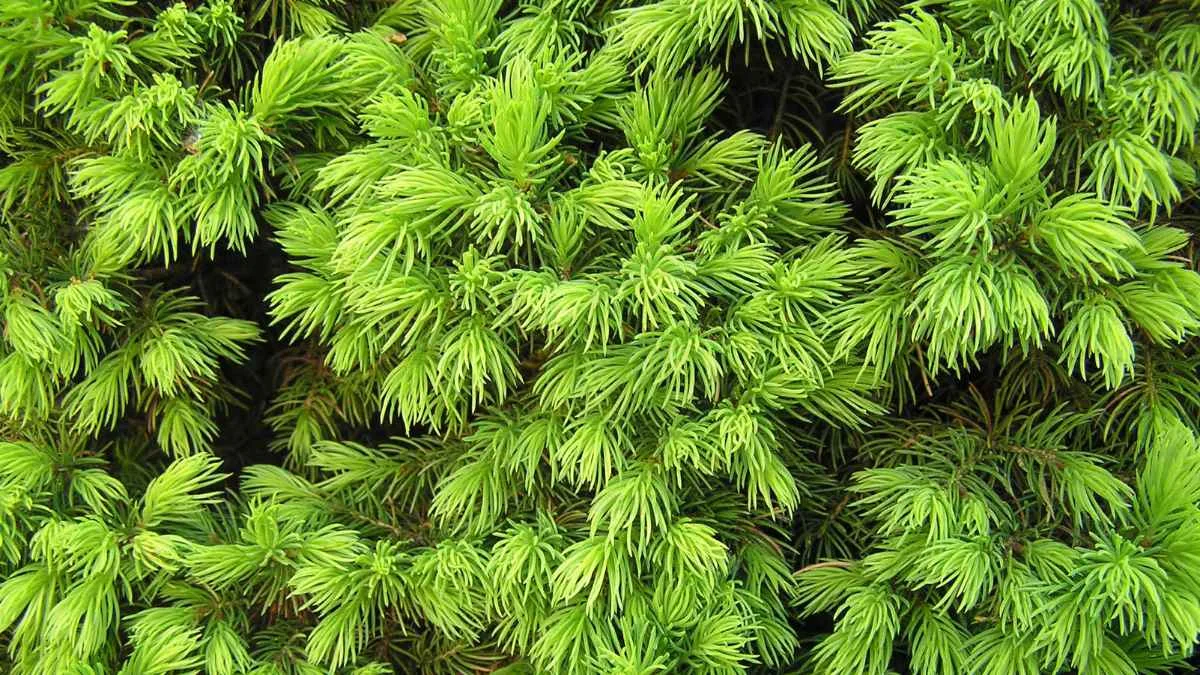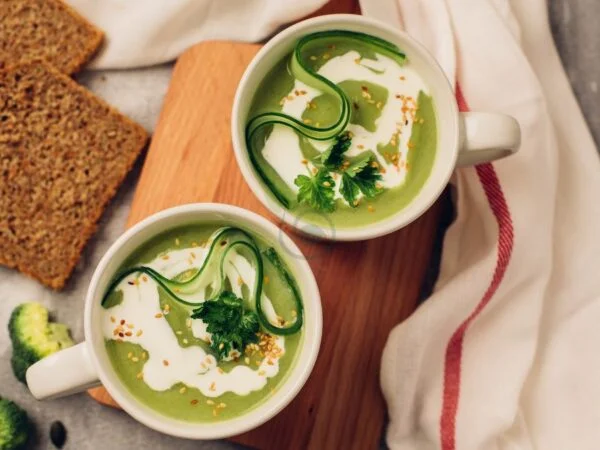Are you looking to learn how to grow Norway Spruce seedling from seed? You've come to the right place. I'll guide you through the process step by step, ensuring you can successfully plant and cultivate these majestic trees in your own backyard.
Norway Spruce (Picea abies) is a popular choice for reforestation and landscaping due to its fast growth and adaptability to various soil types. To grow Norway Spruce seedlings from seed, start by collecting mature cones in autumn. Extract the seeds and stratify them in a cold, moist environment for 60-90 days. Then, sow the seeds in well-draining soil, keeping them moist until germination occurs, typically within 2-4 weeks. Transplant the seedlings into larger containers or directly into the ground once they develop their first set of true leaves. With proper care and patience, you can enjoy the beauty and benefits of Norway Spruce in your landscape for years to come.
Ready to embark on your journey to growing Norway Spruce from seed? Dive deeper into specialized techniques for nurturing seedlings, managing soil conditions, and optimizing growth rates to cultivate healthy, resilient trees that will thrive in your environment.
Key Takeaways
- Understand the basics of spruce cultivation to ensure successful growth from seed.
- Follow a comprehensive seed germination guide for optimal results.
- Choose the right soil and potting method to support healthy seedling development.
- Provide adequate light and maintain proper temperature conditions for robust growth.
- Monitor watering and humidity levels closely to prevent under or overwatering.
- Implement a suitable fertilization schedule to nourish young spruce seedlings effectively.
Understanding Spruce Basics
Spruce Characteristics
Norway Spruce can be identified by its dark green needles and drooping branches, forming a pyramid shape when mature. The crushed needles emit a strong, resinous scent.
Types of Spruce
Differentiate Norway Spruce from Blue Spruce and White Spruce by their unique characteristics. Explore Norway Spruce's uses in landscaping and forestry applications.
Growth Requirements
Provide well-draining soil for optimal growth, ensure adequate sunlight exposure, and maintain proper watering practices to support healthy development.
Seed Germination Guide
Seed Collection
Gather Norway Spruce seeds from mature cones in the fall. Select plump, fully developed seeds for optimal results. Store seeds in a cool, dry place until stratification.
Stratification Process
Stratification is crucial for breaking seed dormancy. Pre-chill Norway Spruce seeds to initiate germination. The process typically takes several weeks for successful stratification.
Sowing Techniques
Demonstrate sowing Norway Spruce seeds in containers. Ensure proper covering and watering post-sowing. Expect germination within a specific timeline after sowing.
Soil and Potting
Ideal Soil Mix
An ideal soil mix for Norway Spruce seeds includes components like compost, sand, and peat moss. These elements provide essential nutrients for seedling growth. Good soil quality is crucial as it supports the development of a healthy root system, aiding in water and nutrient absorption. Drainage in the soil mix is vital to prevent waterlogging, which can lead to root rot.
Potting Seedlings
When transferring germinated Norway Spruce seeds into individual pots, ensure gentle handling to avoid damaging the delicate roots. Use containers that allow proper airflow and drainage to prevent water accumulation. Opt for small pots initially to accommodate the young seedlings' root systems adequately.
Repotting Tips
Knowing when and how to repot growing Norway Spruce seedlings is essential for their continued health. Look out for signs such as roots emerging from drainage holes or stunted growth, indicating the need for repotting. During repotting, prioritize maintaining root health by gently loosening the roots and providing fresh nutrient-rich soil.
Light and Temperature
Light Needs
Norway Spruce seedlings require ample sunlight for optimal growth, needing at least six hours of direct sunlight daily. Insufficient light can lead to leggy, weak seedlings with poor overall health. To meet their light needs, place young spruce trees in sunny locations with minimal shade.
Temperature Requirements
For successful growth, Norway Spruce thrives in temperatures ranging between 60 to 70 degrees Fahrenheit. Extreme temperatures can negatively impact seedling health, causing stress and stunted growth. During different seasons, ensure to regulate temperatures by providing shelter or shade as needed.
Watering and Humidity
Watering Techniques
Young Norway Spruce seedlings require consistent watering to thrive. Water them deeply but infrequently, allowing the soil to dry slightly between waterings. Overwatering can lead to root rot, while underwatering causes stress and stunted growth.
To determine if it's time to water, insert your finger into the soil up to the first knuckle. If it feels dry, it's time to water. Avoid a strict schedule; instead, adjust based on moisture levels.
Humidity Levels
Norway Spruce seedlings prefer moderate humidity levels around 40-60%. High humidity aids in transpiration and nutrient uptake, promoting healthy growth. In contrast, low humidity can cause wilting and slow development.
Indoors, you can increase humidity by using a humidifier or placing a tray of water near the seedlings. Monitor humidity levels with a hygrometer and adjust as needed for optimal growth.
Fertilizing Seedlings
When to Fertilize
Norway Spruce seedlings should be fertilized in early spring before new growth appears. Using a balanced fertilizer is crucial for providing essential nutrients for healthy development. Fertilize every 4-6 weeks during the growing season to support vigorous growth.
Fertilizer Types
For Norway Spruce seedlings, consider using slow-release fertilizers that provide nutrients gradually over time. Organic fertilizers, such as compost or manure, offer natural benefits like improved soil structure. In contrast, synthetic fertilizers deliver specific nutrients efficiently but may lack long-term soil health benefits. Choose a fertilizer based on the growth stage of the seedlings for optimal results.
Overwintering Strategies
Winter Care Tips
During winter, protect Norway Spruce seedlings by covering them with mulch to insulate against cold. Ensure the soil is well-drained to prevent waterlogging, which can harm the seedlings. Water the plants sparingly to avoid root rot.
To shield young Norway Spruce trees from frost and cold winds, consider using windbreaks like burlap screens or wooden barriers. These structures help reduce wind exposure and maintain a more stable temperature around the seedlings.
Winter hydration is crucial for the survival of Norway Spruce seedlings. Ensure that the plants receive adequate moisture during dry winter spells to prevent dehydration and maintain their health.
Protecting from Frost
Frost poses a significant risk to young Norway Spruce trees, potentially causing damage or even death. To protect seedlings from frost events, cover them with frost cloth or blankets during cold nights.
Monitoring weather forecasts for frost alerts is essential in safeguarding your Norway Spruce seedlings. Stay informed about upcoming weather conditions so you can take proactive measures to shield your plants from freezing temperatures.
Pruning and Maintenance
Pruning Techniques
Pruning Norway Spruce trees involves shaping them for optimal growth. Trimming branches helps maintain a strong trunk. Regular pruning is crucial for promoting healthy growth and ensuring proper structure in young spruce seedlings. It also enhances air circulation and sunlight exposure, leading to robust development.
To prune young spruce seedlings, start by removing any damaged or diseased branches. Next, focus on shaping the tree by cutting back excessive growth. Avoid cutting too close to the trunk to prevent damage. Prune during the tree's dormant season to minimize stress and encourage new growth in spring.
Dealing with Pests
Common pests that may affect Norway Spruce seedlings include aphids, spider mites, and spruce gall adelgids. These pests can damage foliage and hinder growth if left unchecked. Organic pest control methods such as introducing beneficial insects or using neem oil are effective in managing infestations without harming the environment.
For more severe pest problems, chemical control options like insecticidal soaps or horticultural oils can be used as a last resort. However, it's essential to follow instructions carefully to avoid harming beneficial insects and pollinators in the garden. Implementing preventive measures like maintaining good plant hygiene and regularly inspecting trees can help minimize pest issues.
Propagation Methods
Beyond Seeds
When propagating Norway Spruce, consider alternative methods like cuttings to expand populations. While cuttings offer quicker results, they may face challenges with root development.
Creating genetic variations through cloning can be advantageous for preserving desirable traits in Norway Spruce. However, cloning techniques require precision and expertise.
Cloning Spruce
Cloning Norway Spruce through tissue culture involves extracting cells from a parent plant to grow identical copies. This method ensures the preservation of specific characteristics.
The advantages of cloning include the ability to replicate superior traits and maintain consistency in offspring. Establishing cloned spruce plants in a new environment involves careful monitoring and acclimatization processes.
Final Remarks
By now, you have gained a comprehensive understanding of how to successfully grow Norway spruce from seed. From mastering the basics of spruce cultivation to navigating the intricacies of seed germination, soil requirements, and maintenance tasks, you are well-equipped to embark on your own spruce-growing journey. Remember to provide consistent care and attention to your seedlings, ensuring they receive adequate light, water, and nutrients for optimal growth. As you progress through each stage of spruce cultivation, don't hesitate to refer back to this guide for guidance and troubleshooting tips.
Now that you have all the tools and knowledge at your disposal, it's time to roll up your sleeves and get started on growing your own beautiful Norway spruce trees. Take action today by applying what you've learned and enjoy watching your seeds flourish into majestic trees right in your backyard.
Frequently Asked Questions
How long does it take for Norway spruce seeds to germinate?
Norway spruce seeds typically germinate within 3 to 5 weeks under optimal conditions. Ensure consistent moisture and moderate temperatures around 60-70°F for successful germination.
What type of soil is best for growing Norway spruce from seed?
Use a well-draining, acidic soil mix with high organic content for Norway spruce seedlings. A blend of peat moss, perlite, and vermiculite provides good drainage and nutrients essential for healthy growth.
How often should I water Norway spruce seedlings?
Water Norway spruce seedlings regularly to keep the soil evenly moist but not waterlogged. Aim to water deeply once or twice a week, adjusting based on environmental factors like temperature and humidity.
When is the best time to fertilize Norway spruce seedlings?
Begin fertilizing Norway spruce seedlings with a balanced liquid fertilizer once they have developed their first set of true leaves. Apply fertilizer at half strength every 2-4 weeks during the growing season.
Do I need to prune my Norway spruce seedlings, and if so, how?
Pruning young Norway spruce seedlings is generally unnecessary unless correcting structural issues or removing damaged branches. Limit pruning to early spring before new growth appears, using clean and sharp tools to make precise cuts.
Image Source: Paid image from CANVA




